
Healthiest states for seniors
Though health and fitness are major concerns for everyone, these factors are especially important for America's older population. America's Health Rankings 2025 Senior Report shows some good news for older adults: rates of early death decreased by 9% between 2022 and 2023. Social connectedness, a key component of wellness, also increased in the same time period.
These factors may continue to evolve as spending on health care for older adults grows. According to a February 2025 analysis from JAMA, more than 40% of the nation's health care expenditures in 2024 were for adults aged 65 and older. However, as the study notes, health care spending varies significantly by location. And these spending habits may change in 2026 due to the passage of President Donald Trump's so-called "Big, Beautiful Bill," which cut tax credits for low-cost health insurance providers. As a result, independent health policy research organization KFF estimates that insurers through the Affordable Care Act will likely raise premiums by an average of 26% in 2026. With this in mind, it likely won't surprise you to learn that a record 47% of Americans reported being anxious about health care in a November 2025 survey from West Health-Gallup.
While much could shift down the line, there is plenty we can learn about the current situation for older Americans by looking at recent data. To determine which states are the most and least healthy for senior populations, Stacker consulted the AHR's 2022 Senior Report, released in 2023. In it, public health researchers analyzed metrics of senior health for every state, ranging from nursing home quality to preventable hospitalizations.
Although the numbers in certain categories changed drastically in some states after the COVID-19 pandemic—and while that may have influenced the behavior of older citizens regarding clinical preventive services—the health crisis was not considered individually in the report. The metrics are split into five categories: social and economic, physical environment, clinical care, behaviors, and health outcomes.
Nationwide, there have been demonstrable shifts in several key factors relative to overall health and quality of life for older adults. States with high poverty rates tend to rank poorly, and the eating and physical activity habits of older adults living in them tend to be less healthy. Older people in these areas often avoid getting medical attention due to the high costs of health care services. Drug-related deaths, for example, doubled between 2018 and 2020, while depression and obesity rose 9% and 16%, respectively, since 2011.
And yet, while early deaths rose by 17% among older people with "high health status," defined as adults over 65 reporting very good or excellent health, actually increased by 13%. This suggests that despite the concerning increases in certain deleterious factors, the lives of older people, in some parts of the United States, are improving.
Stacker included each state's overall score and its rank in all five categories in this story. Read on to see where your state stacks up against the national average.

#50. Mississippi
- Overall score (relative to U.S. average): -0.917
- Social and economic rank: #50
- Physical environment rank: #44
- Clinical care rank: #49
- Behaviors rank: #47
- Health outcomes rank: #43
Mississippi faces serious challenges, with many of its seniors living in poverty. There is a concerning lack of access to proper geriatric health care and preventive clinical services. Poor nutrition and physical inactivity increase the odds of early death.
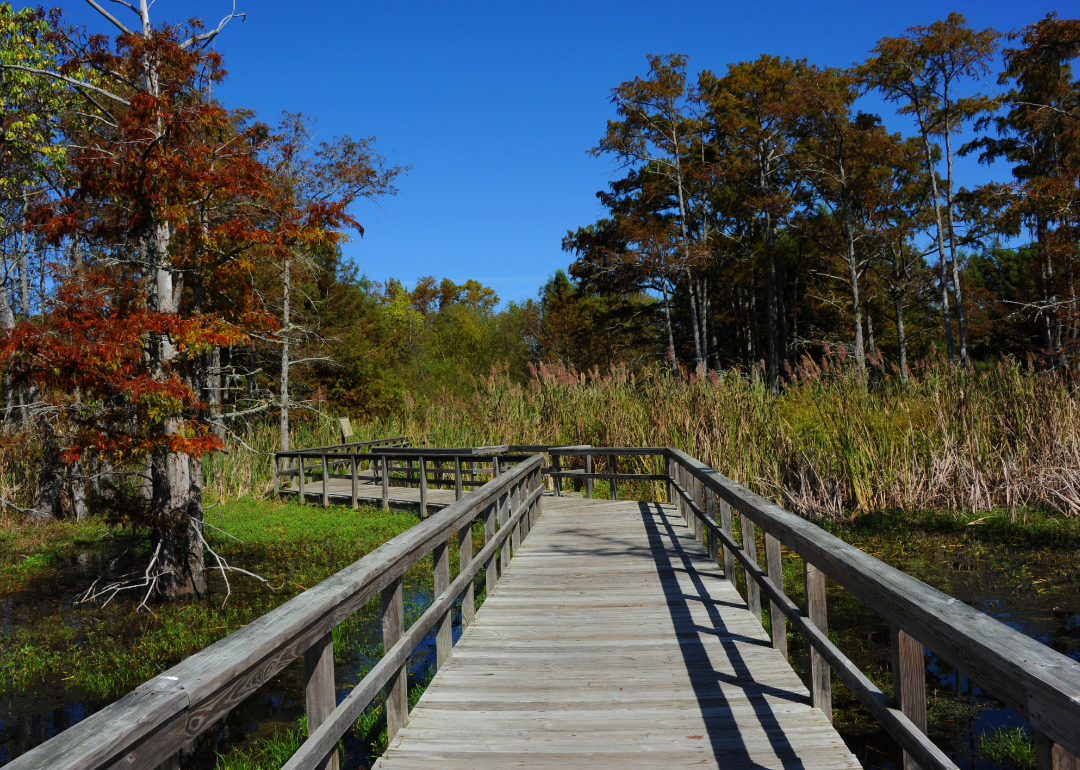
#49. Louisiana
- Overall score (relative to U.S. average): -0.902
- Social and economic rank: #48
- Physical environment rank: #26
- Clinical care rank: #47
- Behaviors rank: #45
- Health outcomes rank: #49
For Louisiana's seniors, there is a high risk of social isolation. Early deaths rose 23% from 2019 to 2020. Even though frequent physical distress is decreasing, the state ranks very low in critical features such as clinical care, social and economic factors, and health outcomes.

#48. Kentucky
- Overall score (relative to U.S. average): -0.891
- Social and economic rank: #46
- Physical environment rank: #13
- Clinical care rank: #37
- Behaviors rank: #50
- Health outcomes rank: #48
Drug-related deaths of senior citizens aged 65 and over in Kentucky increased 64% from 2018 to 2020, even though alcohol consumption remains low. The biggest challenge is the dire need for low-care nursing home staff to keep up with the rise in the number of residents.

#47. West Virginia
- Overall score (relative to U.S. average): -0.835
- Social and economic rank: #42
- Physical environment rank: #32
- Clinical care rank: #46
- Behaviors rank: #49
- Health outcomes rank: #50
Among seniors, West Virginia ranks high in several crucial categories: obesity, physical distress, multiple chronic conditions, and preventable hospitalizations. On the bright side, it's the state with the lowest rate of housing problems and the first in SNAP reach (food stamps provided to adults over 60 living in poverty).
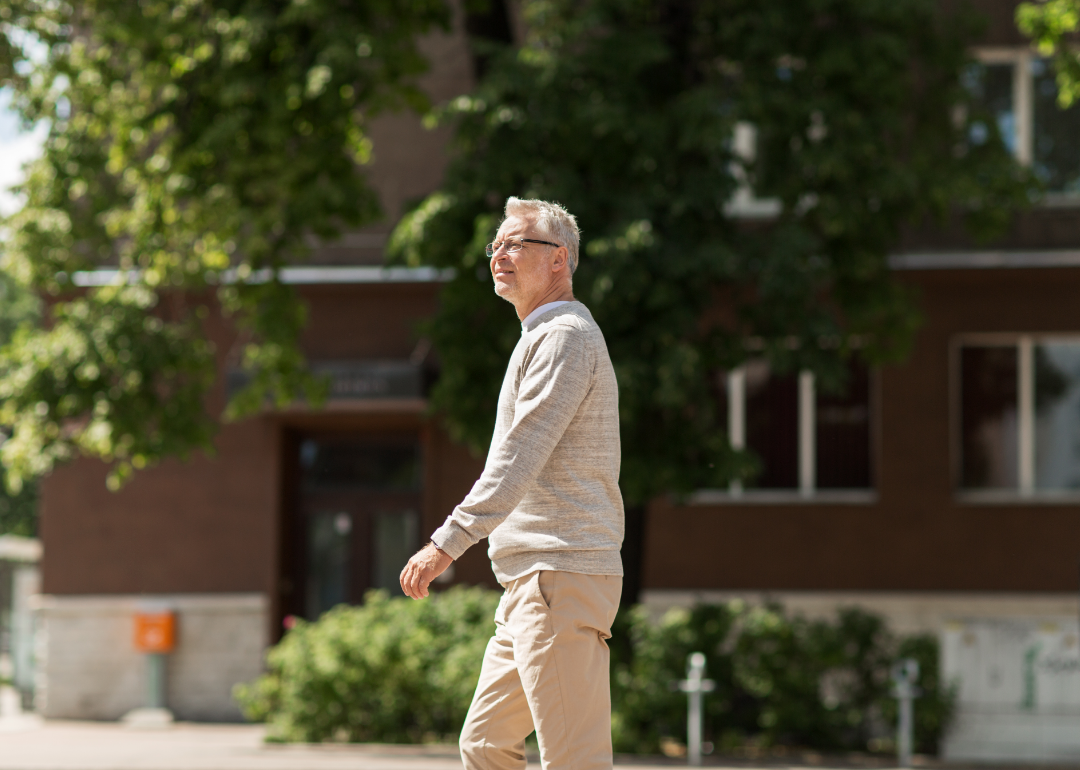
#46. Oklahoma
- Overall score (relative to U.S. average): -0.728
- Social and economic rank: #45
- Physical environment rank: #33
- Clinical care rank: #43
- Behaviors rank: #46
- Health outcomes rank: #45
Poverty is widespread among seniors in Oklahoma, and clinical care is meager; however, the number of geriatric providers grew 37% between September 2018 and September 2021. There is a high early death rate, and suicides increased 34% in the two years before the pandemic.

#45. Alabama
- Overall score (relative to U.S. average): -0.622
- Social and economic rank: #43
- Physical environment rank: #15
- Clinical care rank: #36
- Behaviors rank: #48
- Health outcomes rank: #46
Poverty rates have dropped in the state, but early deaths rose by 16% between 2019 and 2020. Few seniors in Alabama drink excessively, but they also tend to be physically inactive, and don't get enough sleep.

#44. Arkansas
- Overall score (relative to U.S. average): -0.615
- Social and economic rank: #47
- Physical environment rank: #7
- Clinical care rank: #34
- Behaviors rank: #41
- Health outcomes rank: #47
Not many seniors in Arkansas drink to excess, but they tend to be sedentary and have a high early death rate. Flu vaccination rose by 18% from 2011 to 2020; however, the suicide frequency among people 65 and over is above the national average.

#43. Nevada
- Overall score (relative to U.S. average): -0.489
- Social and economic rank: #35
- Physical environment rank: #46
- Clinical care rank: #45
- Behaviors rank: #43
- Health outcomes rank: #44
Behavioral health is the biggest challenge that Nevada seniors face. They rank second in the number of smokers 65 and over, which could be related to a high prevalence of mental distress and, ultimately, to increasing suicide rates. Flu vaccination remains low, but it did increase 24% from 2012 to 2020.

#42. Missouri
- Overall score (relative to U.S. average): -0.422
- Social and economic rank: #41
- Physical environment rank: #17
- Clinical care rank: #29
- Behaviors rank: #44
- Health outcomes rank: #42
The number of geriatric providers in Missouri increased 26% between September 2018 and September 2021. However, poverty rates remain high, as does physical distress. Drug-related deaths rose 186% from 2018 to 2020, and senior Missourians smoke heavily.
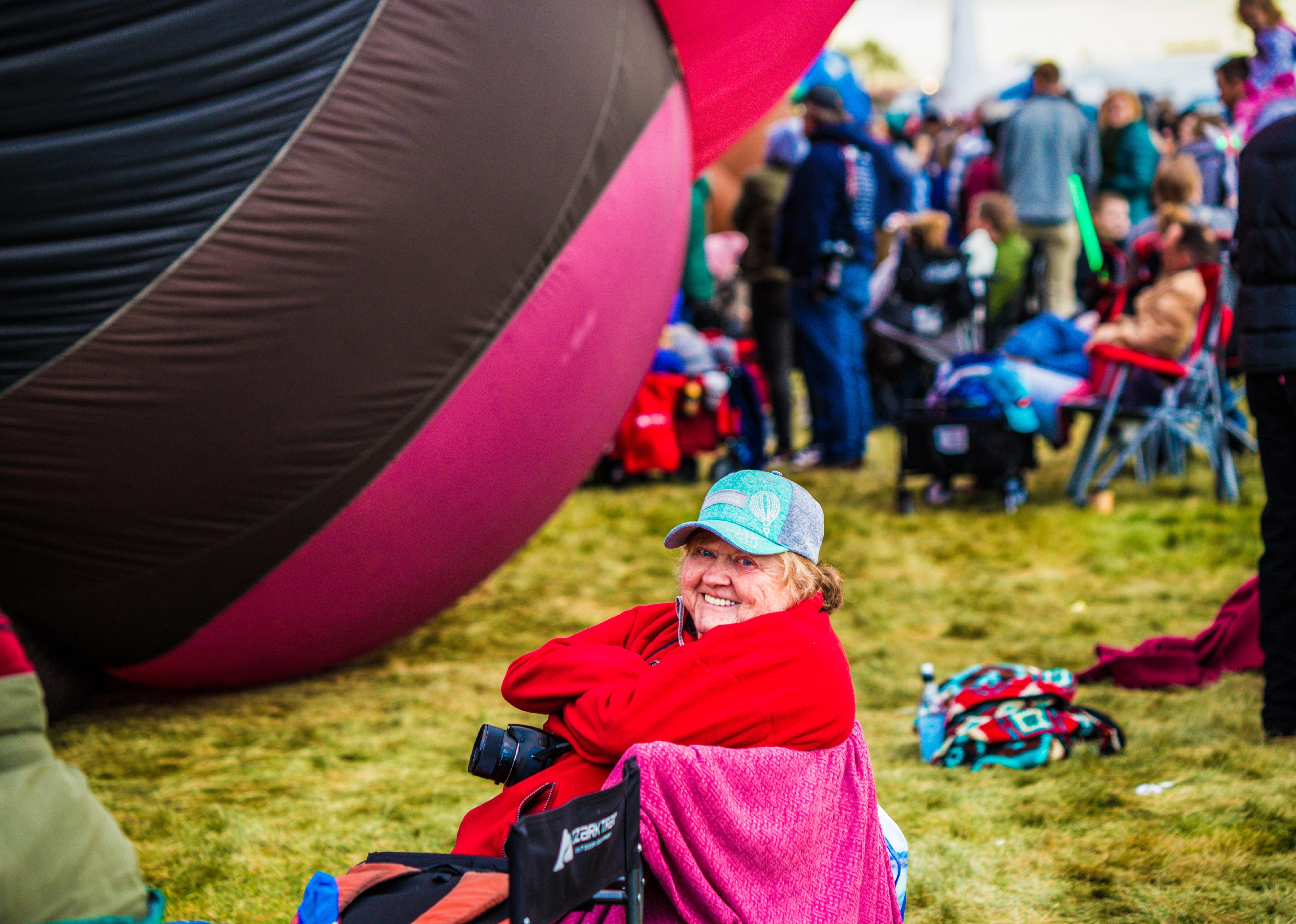
#41. New Mexico
- Overall score (relative to U.S. average): -0.360
- Social and economic rank: #49
- Physical environment rank: #21
- Clinical care rank: #23
- Behaviors rank: #35
- Health outcomes rank: #29
A high percentage of New Mexican seniors are poor, and the state has a high prevalence of food insecurity and violent crimes. Early deaths are on the rise, and so are suicide rates. Even so, the prevalence of multiple chronic conditions remains low, and frequent physical distress decreased 29% between 2019 and 2020.

#40. Georgia
- Overall score (relative to U.S. average): -0.350
- Social and economic rank: #39
- Physical environment rank: #30
- Clinical care rank: #41
- Behaviors rank: #39
- Health outcomes rank: #37
Georgia has a low number of seniors who drink excessively compared to other states; however, drug-related deaths increased 61% from 2018 to 2020. Obesity rose 28% from 2011 to 2020. On the other hand, flu vaccination grew 19% during the same time frame.
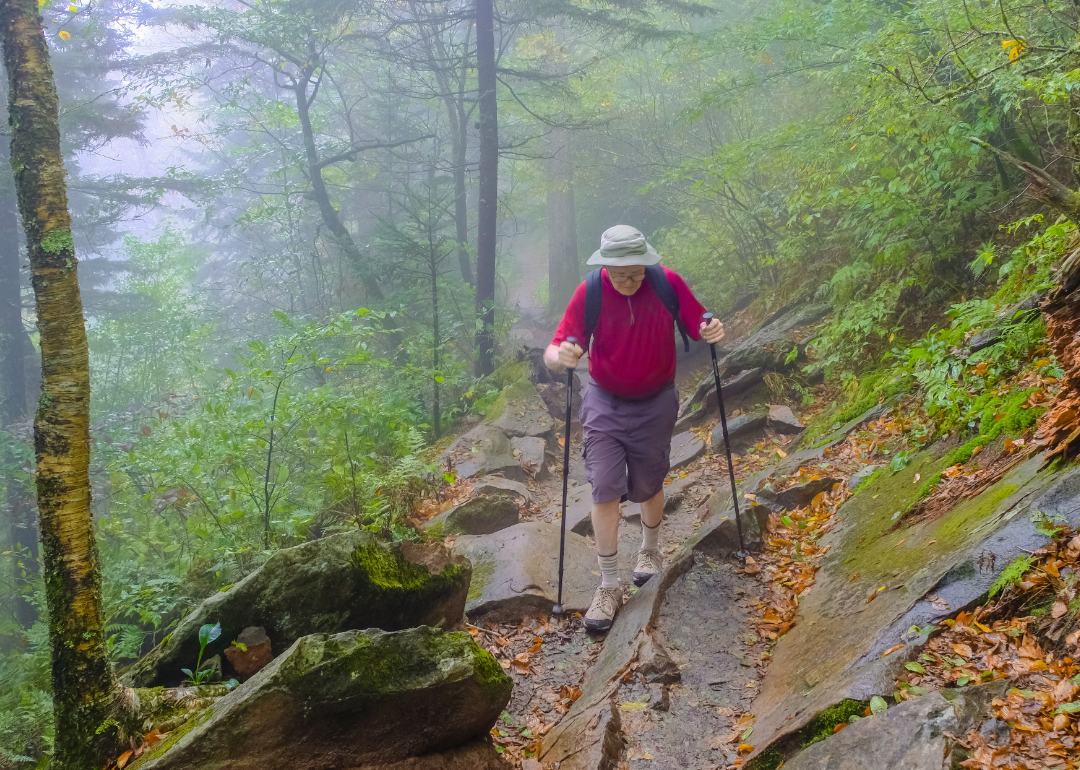
#39. Tennessee
- Overall score (relative to U.S. average): -0.324
- Social and economic rank: #40
- Physical environment rank: #9
- Clinical care rank: #40
- Behaviors rank: #36
- Health outcomes rank: #39
Tennessee has a low prevalence of excessive drinking among seniors, though many of them are heavy smokers. High health status rose 21% between 2017 and 2020, but suicide rates have also increased 26% since 2011.
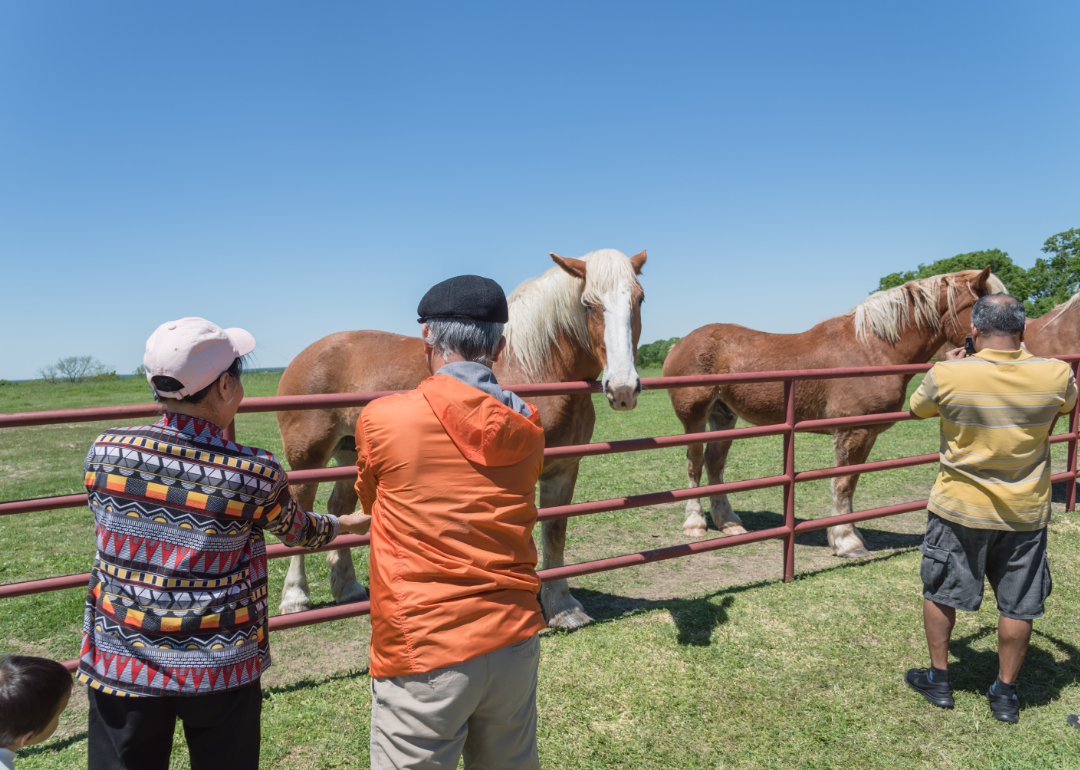
#38. Texas
- Overall score (relative to U.S. average): -0.216
- Social and economic rank: #44
- Physical environment rank: #34
- Clinical care rank: #35
- Behaviors rank: #24
- Health outcomes rank: #32
The Lone Star state has a high percentage of seniors living in poverty, and many avoid getting medical help due to high service costs. The good news is that Texan seniors have a low prevalence of mental and physical distress, and the number of geriatric providers grew 15% from September 2018 to September 2021.

#37. Ohio
- Overall score (relative to U.S. average): -0.212
- Social and economic rank: #28
- Physical environment rank: #31
- Clinical care rank: #27
- Behaviors rank: #42
- Health outcomes rank: #38
Ohio ranks low in air quality and also in seniors' eating and exercise habits. Obesity is prevalent and drug-related deaths have increased 157% since 2010. The state does have a wide range of dedicated health care providers and hospice care available.

#36. South Carolina
- Overall score (relative to U.S. average): -0.189
- Social and economic rank: #38
- Physical environment rank: #11
- Clinical care rank: #33
- Behaviors rank: #34
- Health outcomes rank: #36
Seniors in The Palmetto State struggle with a high prevalence of multiple chronic conditions, a high violent crime rate, and an increasing number of early deaths. On the bright side, mental distress ranks rather low, and the number of geriatric providers in South Carolina rose 24% from 2018 to 2020.
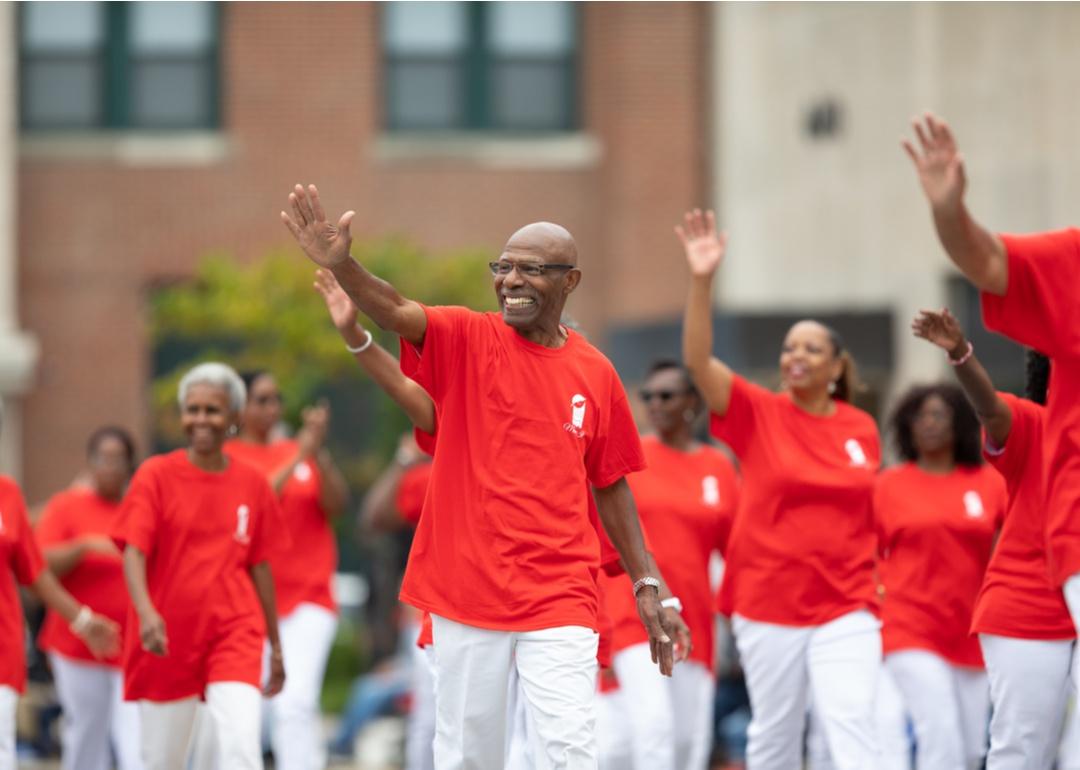
#35. Indiana
- Overall score (relative to U.S. average): -0.087
- Social and economic rank: #24
- Physical environment rank: #27
- Clinical care rank: #27
- Behaviors rank: #33
- Health outcomes rank: #41
Indiana's seniors rank high in fruit and vegetable consumption and low in excessive drinking. From the periods of 2008-2010 and 2018-2020, drug-related deaths increased 111%. Other concerns include a high prevalence of smoking and rising obesity rates.

#34. North Carolina
- Overall score (relative to U.S. average): -0.072
- Social and economic rank: #29
- Physical environment rank: #10
- Clinical care rank: #24
- Behaviors rank: #38
- Health outcomes rank: #35
A large number of seniors get preventive clinical services—such as vaccines and cancer screenings—in North Carolina. But many of the state's seniors report frequent mental distress, and drug-related deaths have risen 85% since 2010.
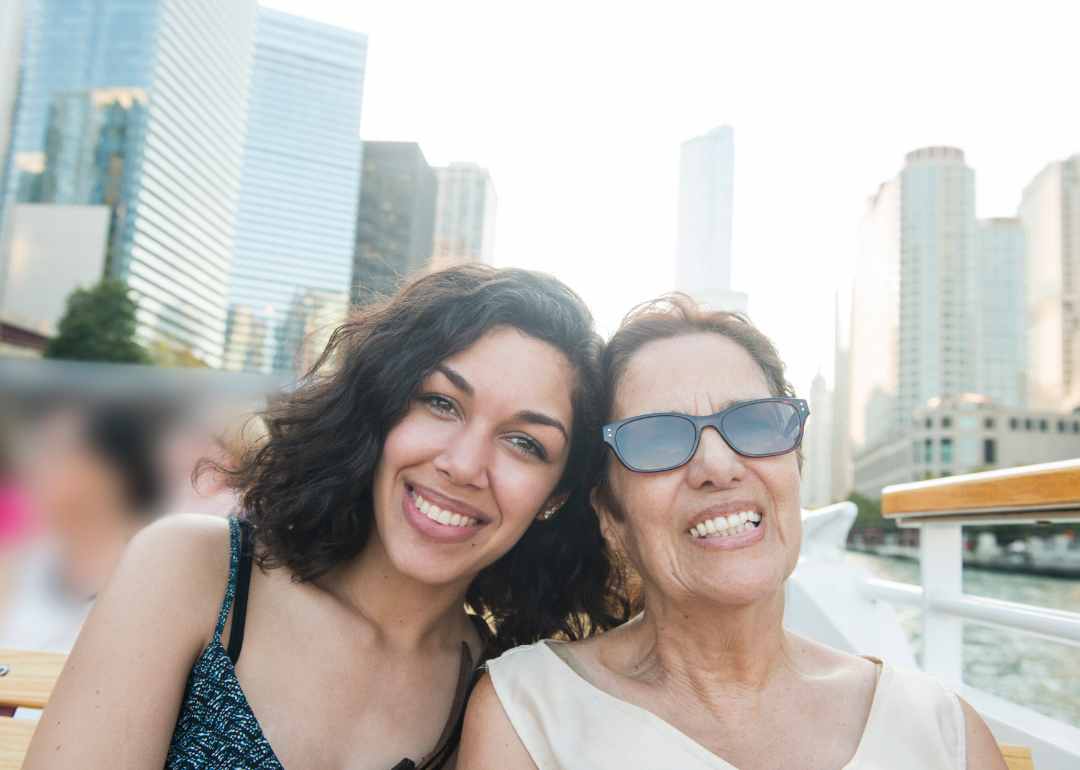
#33. Illinois
- Overall score (relative to U.S. average): -0.055
- Social and economic rank: #31
- Physical environment rank: #45
- Clinical care rank: #50
- Behaviors rank: #29
- Health outcomes rank: #8
Illinois has a high number of able-bodied seniors, with a low prevalence of frequent mental distress and suicide. But many do not get adequate medical attention due to high costs. While flu vaccination increased 27% from 2012 to 2020, low numbers of cancer screenings remain a problem.

#32. New York
- Overall score (relative to U.S. average): -0.018
- Social and economic rank: #37
- Physical environment rank: #39
- Clinical care rank: #39
- Behaviors rank: #17
- Health outcomes rank: #16
Seniors in New York state do not get enough sleep, and they are at high risk of social isolation. While their high health status increased 30% from 2011 to 2020, early deaths increased 33% during the last year of the same period.
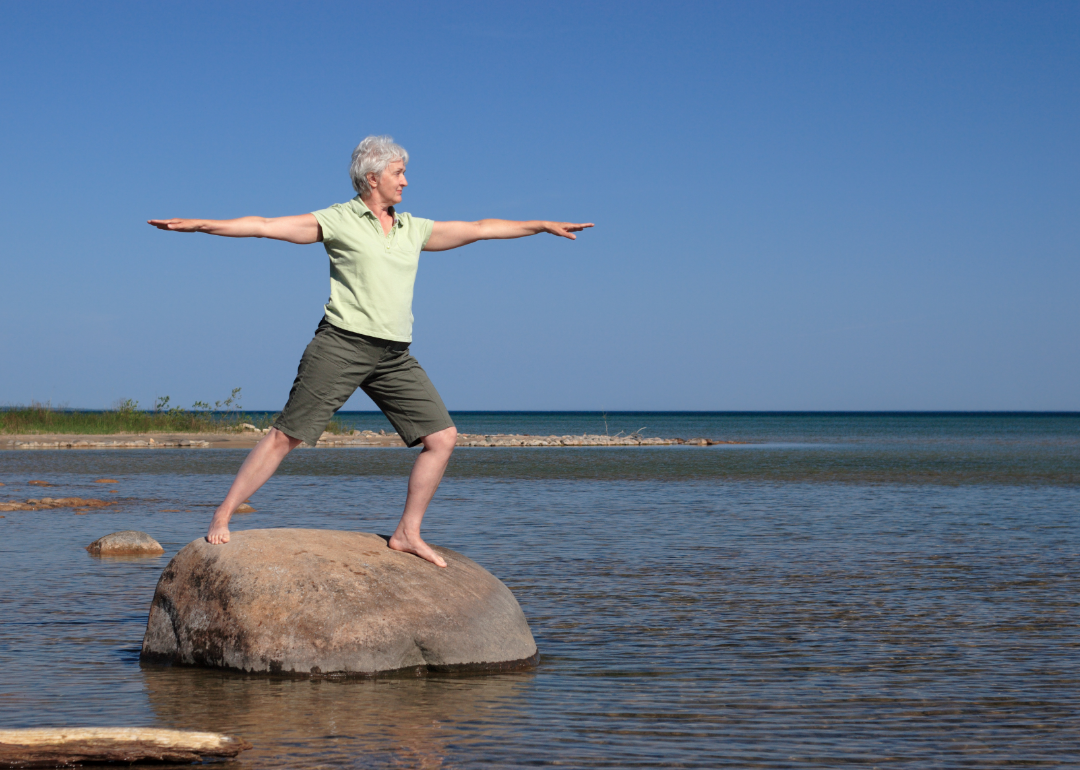
#31. Michigan
- Overall score (relative to U.S. average): -0.013
- Social and economic rank: #25
- Physical environment rank: #25
- Clinical care rank: #15
- Behaviors rank: #30
- Health outcomes rank: #40
Michigan has a high prevalence of obesity, and reports of frequent mental distress grew 61% between 2011 and 2020. The good news is that the number of seniors avoiding health care because of high costs decreased by 49% from 2016 to 2020.

#30. Pennsylvania
- Overall score (relative to U.S. average): -0.007
- Social and economic rank: #22
- Physical environment rank: #36
- Clinical care rank: #18
- Behaviors rank: #40
- Health outcomes rank: #34
The number of low-care nursing home residents increased 128% in Pennsylvania between 2018 and 2020. Drug-related deaths rose an alarming 149% since 2010. Air pollution, low physical activity, and frequent physical distress are other factors that affect the lives of older Pennsylvanians.

#29. New Jersey
- Overall score (relative to U.S. average): 0.013
- Social and economic rank: #23
- Physical environment rank: #50
- Clinical care rank: #44
- Behaviors rank: #28
- Health outcomes rank: #13
New Jersey seniors are mostly non-smokers, and they tend to eat a healthy amount of fruits and vegetables. However, the number of early deaths rose 30% from 2019 to 2020. Though they tend to miss their pneumonia vaccinations, the overall health status of seniors in the Garden State increased 17% between 2017 and 2020.

#28. Florida
- Overall score (relative to U.S. average): 0.029
- Social and economic rank: #21
- Physical environment rank: #35
- Clinical care rank: #38
- Behaviors rank: #22
- Health outcomes rank: #33
Florida has a low prevalence of falls and a high percentage of four- and five-star nursing home beds in this popular state for retirement. Frequent physical distress dropped 24% from 2019 to 2020. Drug-related deaths, however, rose 58% since 2010.

#27. Kansas
- Overall score (relative to U.S. average): 0.052
- Social and economic rank: #34
- Physical environment rank: #28
- Clinical care rank: #22
- Behaviors rank: #20
- Health outcomes rank: #28
Kansas has a low number of seniors living in poverty, and most of them have healthy sleeping habits. Even so, early deaths increased 14% from 2019 to 2020, and the number of specialized geriatric providers is insufficient.

#26. California
- Overall score (relative to U.S. average): 0.060
- Social and economic rank: #36
- Physical environment rank: #49
- Clinical care rank: #25
- Behaviors rank: #11
- Health outcomes rank: #19
California's seniors are physically active and have a low smoking rate, but excessive drinking is alarming. Drug-related deaths also increased 70% since 2010. Home health care workers are available, and seniors are largely able to afford medical attention.

#25. Wyoming
- Overall score (relative to U.S. average): 0.069
- Social and economic rank: #16
- Physical environment rank: #2
- Clinical care rank: #48
- Behaviors rank: #31
- Health outcomes rank: #22
Obesity is high and on the rise in Wyoming; between 2011 and 2020, 45% of seniors were critically overweight. Although the number of geriatric providers increased 35% from 2019 to 2020, early death rates also grew by 18% during the same time span.

#24. Alaska
- Overall score (relative to U.S. average): 0.131
- Social and economic rank: #12
- Physical environment rank: #43
- Clinical care rank: #42
- Behaviors rank: #15
- Health outcomes rank: #30
Alaska faces several challenges including a high prevalence of suicide—a 70% rise between 2018–2020—and excessive drinking. Nonetheless, the overall physical health of seniors is good, and there is a low rate of frequent mental distress.

#23. Arizona
- Overall score (relative to U.S. average): 0.133
- Social and economic rank: #32
- Physical environment rank: #38
- Clinical care rank: #30
- Behaviors rank: #9
- Health outcomes rank: #27
Arizona has a low percentage of obesity, despite the fact that physical inactivity increased to 29% between 2015 and 2020. Still, Arizona ranks poorly in air quality, public safety, and flu vaccination.

#22. North Dakota
- Overall score (relative to U.S. average): 0.167
- Social and economic rank: #26
- Physical environment rank: #1
- Clinical care rank: #31
- Behaviors rank: #36
- Health outcomes rank: #6
The physical environment for seniors in North Dakota is second to none. Water and air are top quality, and housing is sufficient and adequate. However, excessive drinking increased 50% among people ages 65 and over between 2011 and 2020.

#21. Iowa
- Overall score (relative to U.S. average): 0.193
- Social and economic rank: #30
- Physical environment rank: #8
- Clinical care rank: #10
- Behaviors rank: #25
- Health outcomes rank: #21
Seniors in Iowa are at low risk of social isolation, and most of them do not face severe housing problems. On the downside, excessive drinking is on the rise, and there are not enough geriatric care providers.

#20. Montana
- Overall score (relative to U.S. average): 0.203
- Social and economic rank: #27
- Physical environment rank: #4
- Clinical care rank: #32
- Behaviors rank: #10
- Health outcomes rank: #25
Montana's strengths include high physical activity, low preventable hospitalization rates, and low prevalence of multiple chronic conditions. On the flipside there are a low number of seniors with a dedicated health care provider, and Montana has one of the highest suicide rates in the nation.
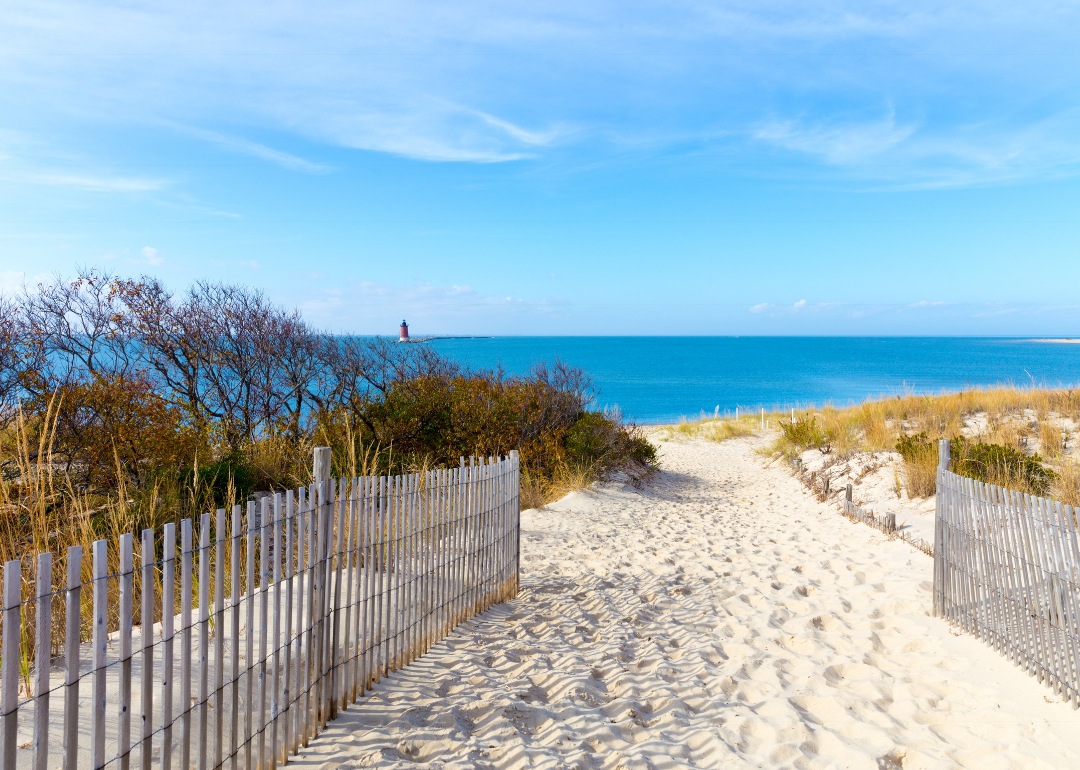
#19. Delaware
- Overall score (relative to U.S. average): 0.243
- Social and economic rank: #4
- Physical environment rank: #24
- Clinical care rank: #21
- Behaviors rank: #32
- Health outcomes rank: #31
Delaware has a low number of suicides among seniors, but it also has a problem with obesity, which rose 30% from 2011 to 2020. America's first state also has a high prevalence of seniors with multiple chronic conditions.

#18. Rhode Island
- Overall score (relative to U.S. average): 0.255
- Social and economic rank: #33
- Physical environment rank: #37
- Clinical care rank: #4
- Behaviors rank: #18
- Health outcomes rank: #10
The number of seniors in this New England state who can access geriatric care is high. From 2011 to 2020, the health status of people 65 and over in Rhode Island rose 32%, while those with frequent physical distress decreased 28% over the last two years of the same time frame.

#17. South Dakota
- Overall score (relative to U.S. average): 0.287
- Social and economic rank: #19
- Physical environment rank: #3
- Clinical care rank: #16
- Behaviors rank: #21
- Health outcomes rank: #23
The overall health status of seniors in South Dakota increased 23% between 2011 and 2020. Unfortunately, during the last two years of the same time span, early deaths rose 21%. The state has a low prevalence of mental distress among senior citizens, but also has the lowest ratio of geriatric providers in the nation.

#16. Virginia
- Overall score (relative to U.S. average): 0.301
- Social and economic rank: #15
- Physical environment rank: #12
- Clinical care rank: #26
- Behaviors rank: #19
- Health outcomes rank: #14
Virginia has a low percentage of seniors living in poverty. They sleep well and report experiencing mental distress at a lower rate than many other places. However, drug-related deaths grew 127% since 2010, and preventable hospitalization rates are high.
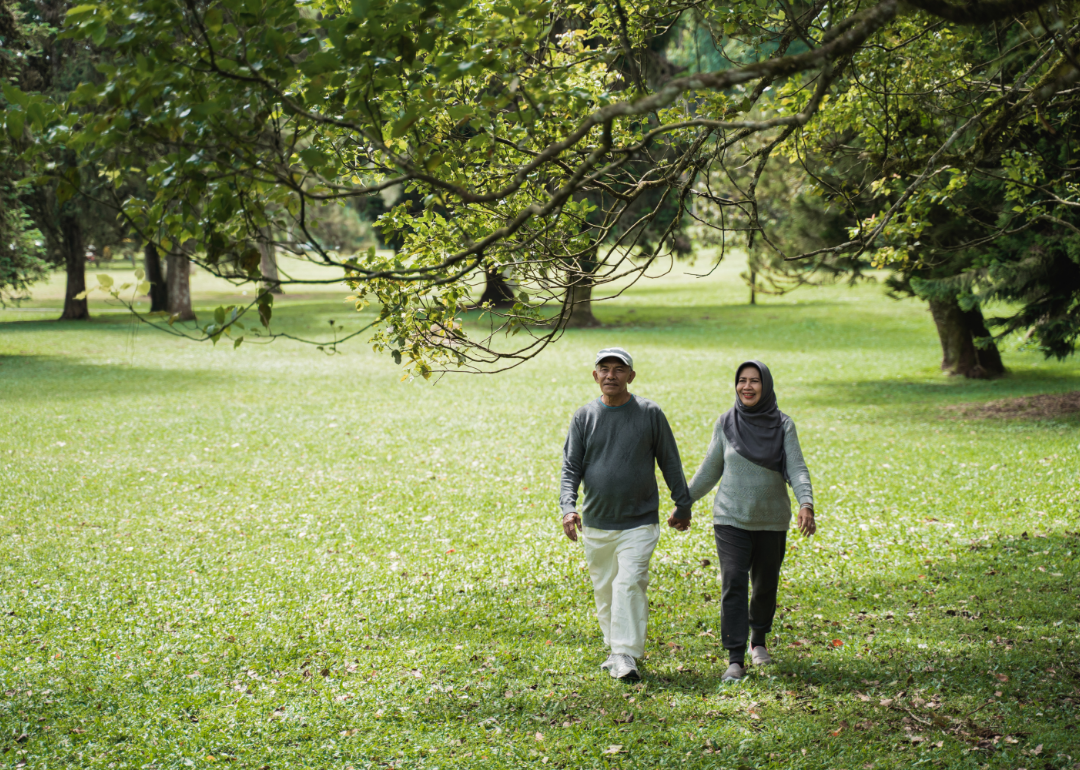
#15. Idaho
- Overall score (relative to U.S. average): 0.342
- Social and economic rank: #14
- Physical environment rank: #13
- Clinical care rank: #19
- Behaviors rank: #14
- Health outcomes rank: #20
Idaho ranks high in sleep health, preventable hospitalizations, and nursing home quality. Suicide rates are high, though, and drug-related deaths increased a concerning 197% since 2010.
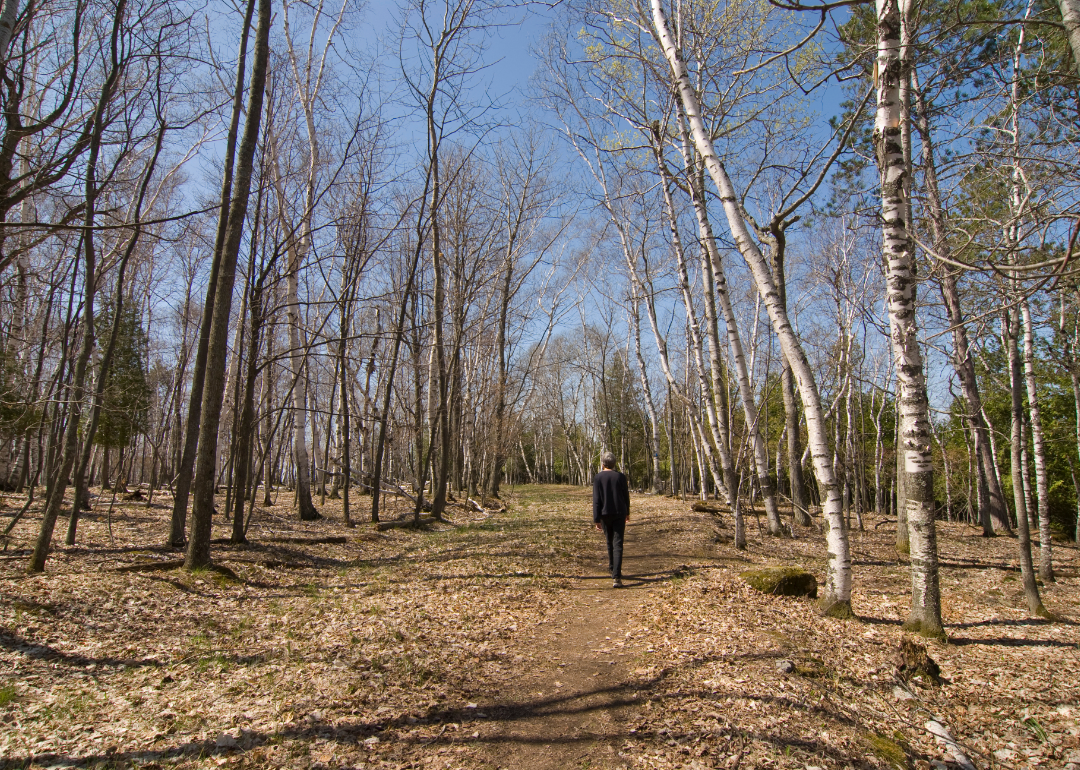
#14. Wisconsin
- Overall score (relative to U.S. average): 0.384
- Social and economic rank: #8
- Physical environment rank: #47
- Clinical care rank: #12
- Behaviors rank: #16
- Health outcomes rank: #18
Excessive drinking among seniors is alarming in Wisconsin, as is the low prevalence of cancer screenings. Though the overall health status rose 20% between 2017 and 2020, suicides increased 24% over the last two years alone during the same period.

#13. Maine
- Overall score (relative to U.S. average): 0.400
- Social and economic rank: #9
- Physical environment rank: #5
- Clinical care rank: #2
- Behaviors rank: #27
- Health outcomes rank: #26
Smoking among seniors is on the rise in Maine—up 46% between 2014 and 2020. Low exercise is a problem, too, and there is a high percentage of suicides among seniors. However, frequent physical distress decreased 25% from 2018 to 2020, and flu vaccination grew 17% from 2011 to 2020.

#12. Oregon
- Overall score (relative to U.S. average): 0.412
- Social and economic rank: #5
- Physical environment rank: #48
- Clinical care rank: #17
- Behaviors rank: #8
- Health outcomes rank: #23
Oregon seniors are physically active and eat healthy. However, air pollution, water quality, and housing problems are worrisome. Even though they don't often suffer multiple chronic conditions, reports of mental distress and suicide rates rank high in this West Coast state.

#11. Nebraska
- Overall score (relative to U.S. average): 0.431
- Social and economic rank: #18
- Physical environment rank: #6
- Clinical care rank: #11
- Behaviors rank: #13
- Health outcomes rank: #15
Nebraska's senior citizens enjoy a high health status that has grown 22% between 2011 and 2020. However, they tend to miss their cancer screenings, and early deaths increased 18% from 2019 to 2020.

#10. Massachusetts
- Overall score (relative to U.S. average): 0.460
- Social and economic rank: #7
- Physical environment rank: #40
- Clinical care rank: #3
- Behaviors rank: #26
- Health outcomes rank: #7
Seniors in Massachusetts are on top of their preventive health care. Seniors here rank first in flu vaccination and cancer screenings. Massachusetts also has an optimal number of geriatric health care providers. On the other hand, drug-related deaths increased 155% since 2010.

#9. Maryland
- Overall score (relative to U.S. average): 0.467
- Social and economic rank: #13
- Physical environment rank: #29
- Clinical care rank: #5
- Behaviors rank: #12
- Health outcomes rank: #12
Though Maryland ranks high in clinical care, drug-related deaths of seniors increased an astonishing 323% since 2010. On the positive side, smoking remains low, as does the prevalence of frequent physical distress.

#8. Washington
- Overall score (relative to U.S. average): 0.540
- Social and economic rank: #6
- Physical environment rank: #41
- Clinical care rank: #9
- Behaviors rank: #6
- Health outcomes rank: #17
Early death rates are low in Washington, as is the amount of seniors with multiple chronic conditions. However, physical inactivity rose 25% between 2015 and 2020, and drug-related deaths increased 64% since 2010.

#7. Hawaii
- Overall score (relative to U.S. average): 0.549
- Social and economic rank: #11
- Physical environment rank: #20
- Clinical care rank: #14
- Behaviors rank: #23
- Health outcomes rank: #1
Hawaii was the healthiest state for seniors just a few years ago. It still has a low level of obesity, a low early death rate, and a high quality of nursing homes. But in recent years, two statistics have become concerning: a 62% increase in frequent mental distress, and a 129% rise in drug-related deaths.

#6. New Hampshire
- Overall score (relative to U.S. average): 0.567
- Social and economic rank: #3
- Physical environment rank: #18
- Clinical care rank: #20
- Behaviors rank: #7
- Health outcomes rank: #11
New Hampshire has a small number of seniors living in poverty, and they are at low risk of isolation. The seniors here rank second in physical activity, but face severe housing problems and drink excessively. Seniors' high health status grew 17% between 2011 and 2020.

#5. Colorado
- Overall score (relative to U.S. average): 0.611
- Social and economic rank: #20
- Physical environment rank: #23
- Clinical care rank: #7
- Behaviors rank: #1
- Health outcomes rank: #5
Colorado's seniors are physically active, have a low rate of early deaths, and a low prevalence of food insecurity. There is much to improve on, though. Drug-related deaths went up by 70% since 2010, and there is a high prevalence of fall-related injuries.

#4. Connecticut
- Overall score (relative to U.S. average): 0.634
- Social and economic rank: #17
- Physical environment rank: #42
- Clinical care rank: #6
- Behaviors rank: #3
- Health outcomes rank: #2
Connecticut has high numbers of able-bodied seniors, a high SNAP enrollment, and a low prevalence of frequent physical distress. Not all the numbers are rosy, though. Suicide rates increased 41% from 2018 to 2020, and severe housing problems are high.

#3. Minnesota
- Overall score (relative to U.S. average): 0.715
- Social and economic rank: #9
- Physical environment rank: #22
- Clinical care rank: #1
- Behaviors rank: #5
- Health outcomes rank: #3
In Minnesota, heavy drinking is common, and obesity is on the rise. Although drug-related deaths are low, they almost tripled since 2010. Seniors here tend to sleep well and rarely suffer multiple chronic conditions.

#2. Vermont
- Overall score (relative to U.S. average): 0.752
- Social and economic rank: #2
- Physical environment rank: #18
- Clinical care rank: #13
- Behaviors rank: #2
- Health outcomes rank: #9
Vermont ranks high in social and economic factors, and seniors tend to eat healthy and exercise. This leads to low early death rates, and a low prevalence of multiple chronic conditions. The number of geriatric providers grew 21% between September 2018 and September 2020, but there was a 10% decrease in pneumonia vaccination between 2017 and 2020.

#1. Utah
- Overall score (relative to U.S. average): 0.763
- Social and economic rank: #1
- Physical environment rank: #16
- Clinical care rank: #8
- Behaviors rank: #4
- Health outcomes rank: #4
Utah's seniors enjoy favorable economic conditions, and stay physically active while largely avoiding smoking and drinking. The quality of care ranks high, improving the overall health status of senior citizens. However, drug-related deaths doubled since 2010.



